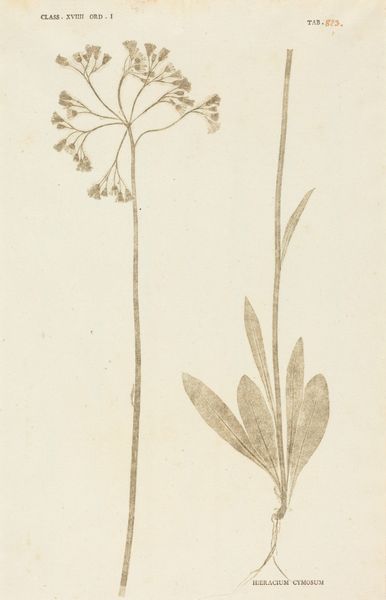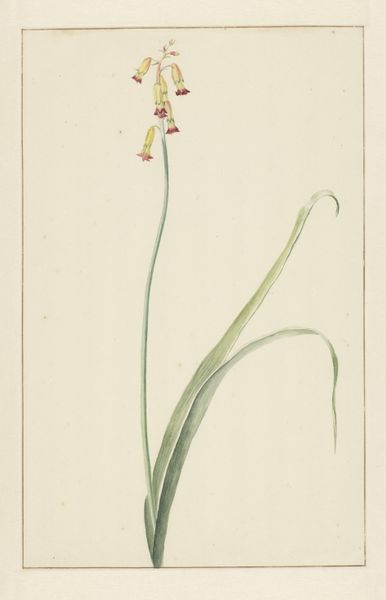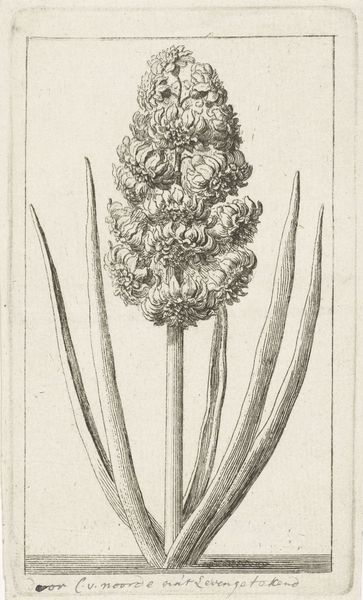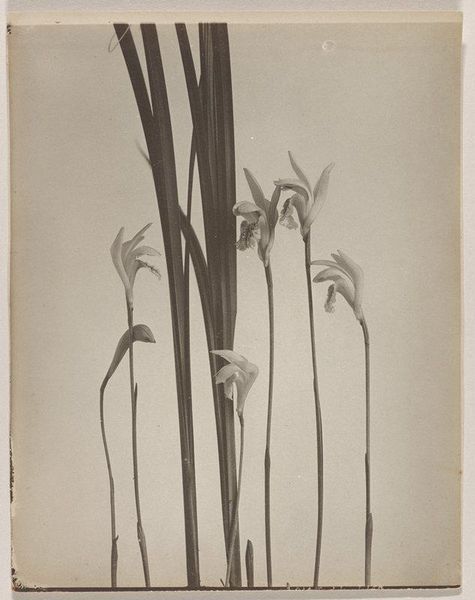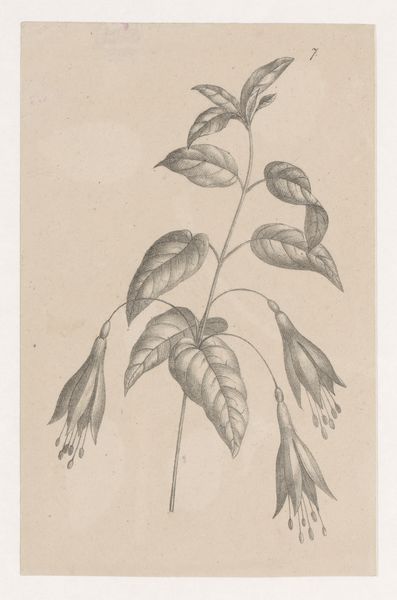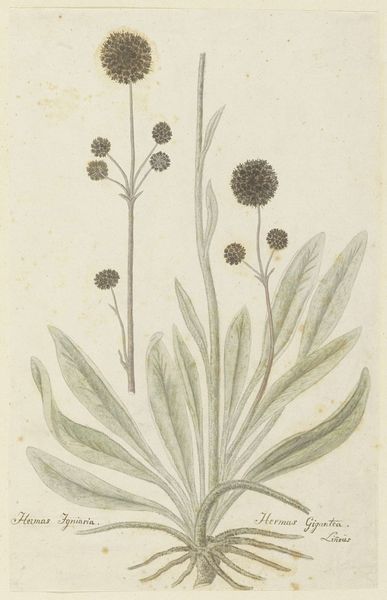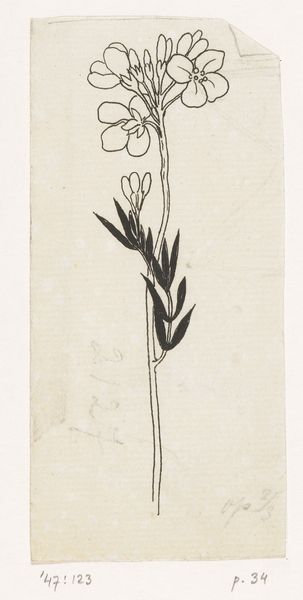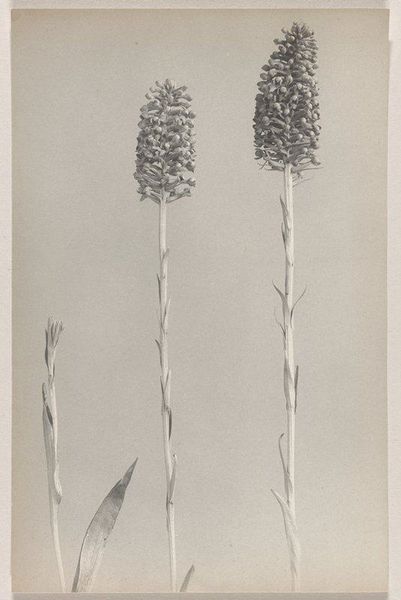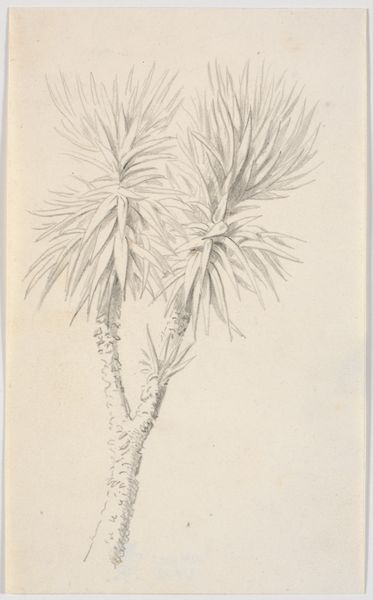
drawing, pencil
#
pencil drawn
#
drawing
#
pencil
#
line
#
realism
Dimensions: height 143 mm, width 84 mm
Copyright: Rijks Museum: Open Domain
Curator: Welcome to the Rijksmuseum. Before us, we have Isaac Weissenbruch's pencil drawing, "Plant met twee bloemen," created sometime between 1836 and 1912. Editor: It’s strikingly stark. The artist's close observation gives the drawing a documentary feel. Despite being rendered only in pencil, it seems to almost vibrate with life, but what might this specific plant species represent? Curator: That's an interesting question! Weissenbruch came of age during a period when Dutch artists were heavily involved with artistic representations of rural landscapes and themes of nature in order to symbolize ideas about national and cultural identity. The act of capturing a "common" plant, one assumes from the Dutch countryside, is very telling. Editor: Yes, it gives voice to nature as a representation of place and people. Consider the phallic nature of the seed pods; it’s so striking! And there are two… implying, perhaps, relationship, balance. The whole thing feels almost sacred. Could Weissenbruch's work be interpreted as some type of commentary about gender relations at the turn of the century? Curator: That's a provocative idea. Considering the social constraints and gender roles of the period, interpreting the twin flower stalks as representing the relationship between the feminine and masculine is entirely plausible. It asks us to look critically at constructions of binary relations of power in 19th century European thought. Editor: Precisely! I see it as a potent emblem for resilience and regeneration, a quiet yet powerful symbol. It reflects the way that something perceived to be "meek", such as a small weed, can be profoundly symbolic and, when replicated, take on a larger life of their own. Curator: Exactly. It serves as a stark reminder to reassess conventional meanings attributed to flora, acknowledging them as active participants within larger cultural conversations. What was initially perceived to be unassuming transforms into a stimulating conversation about broader ideological concerns and dynamics of agency. Editor: What a privilege to reconsider "Plant met twee bloemen" in such rich and stimulating ways! Thank you for the analysis. Curator: It’s been a genuine pleasure. Thank you for sharing such compelling thoughts on its hidden layers of meaning.
Comments
No comments
Be the first to comment and join the conversation on the ultimate creative platform.

